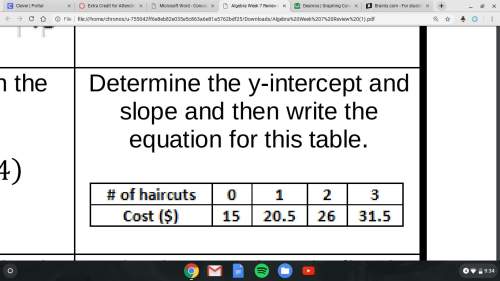
Mathematics, 15.04.2020 03:28 oshawn108
Prove the following statement using mathematical induction. Do not derive it from Theorem 5.2.1 or Theorem 5.2.2. For every integer n ≥ 1, 1 + 6 + 11 + 16 + + (5n − 4) = n(5n − 3) 2 . Proof (by mathematical induction): Let P(n) be the equation 1 + 6 + 11 + 16 + + (5n − 4) = n(5n − 3) 2 . We will show that P(n) is true for every integer n ≥ 1. Show that P(1) is true: Select P(1) from the choices below. P(1) = 1 1 = 1 · (5 · 1 − 3) 2 1 + (5 · 1 − 4) = 1 · (5 · 1 − 3) P(1) = 1 · (5 · 1 − 3) 2 The selected statement is true because both sides of the equation equal the same quantity. Show that for each integer k ≥ 1, if P(k) is true, then P(k + 1) is true: Let k be any integer with k ≥ 1, and suppose that P(k) is true. The left-hand side of P(k) is and the right-hand side of P(k) is . [The inductive hypothesis states that the two sides of P(k) are equal.] We must show that P(k + 1) is true. P(k + 1) is the equation 1 + 6 + 11 + 16 + ⋯ + (5(k + 1) − 4) = . After substitution from the inductive hypothesis, the left-hand side of P(k + 1) becomes + (5(k + 1) − 4). When the left-hand and right-hand sides of P(k + 1) are simplified, they both can be shown to equal . Hence P(k + 1) is true, which completes the inductive step. [Thus both the basis and the inductive steps have been proved, and so the proof by mathematical induction is complete.]

Answers: 1


Another question on Mathematics

Mathematics, 21.06.2019 13:30
Given: △abc, ab=15, bd=9 ad ⊥ bc , m∠c=30°. find: the perimeter of the triangle.
Answers: 1


Mathematics, 21.06.2019 15:30
Jonah runs 3/5 miles on sunday and 7/10 mile on monday. he uses the model to find that he can ran a total of 1 mile . what mistake does jonah make
Answers: 2

Mathematics, 21.06.2019 16:10
To find the extreme values of a function f(x.y) on a curve x-x(t), y y(t), treat f as a function of the single variable t and use the chain rule to find where df/dt is zero. in any other single-variable case, the extreme values of f are then found among the values at the critical points (points where df/dt is zero or fails to exist), and endpoints of the parameter domain. find the absolute maximum and minimum values of the following function on the given curves. use the parametric equations x=2cos t, y 2 sin t functions: curves: i) the semicircle x4,y20 i) the quarter circle x2+y-4, x20, y20 b, g(x,y)=xy
Answers: 2
You know the right answer?
Prove the following statement using mathematical induction. Do not derive it from Theorem 5.2.1 or T...
Questions


Chemistry, 12.08.2020 14:01





Mathematics, 12.08.2020 14:01

English, 12.08.2020 14:01



Mathematics, 12.08.2020 14:01

Business, 12.08.2020 14:01






History, 12.08.2020 14:01





